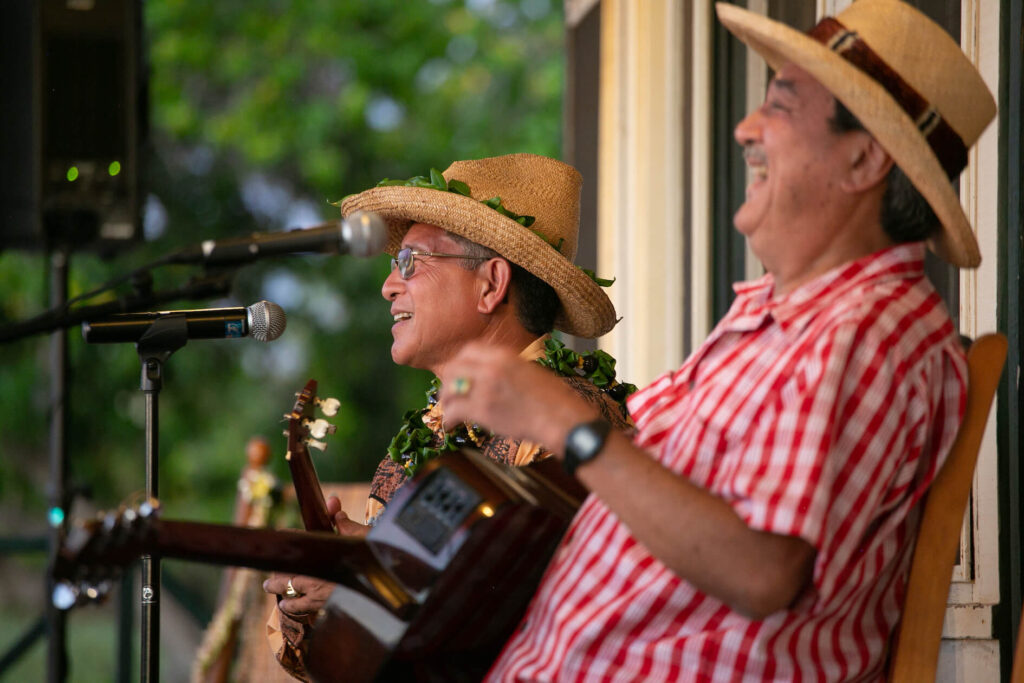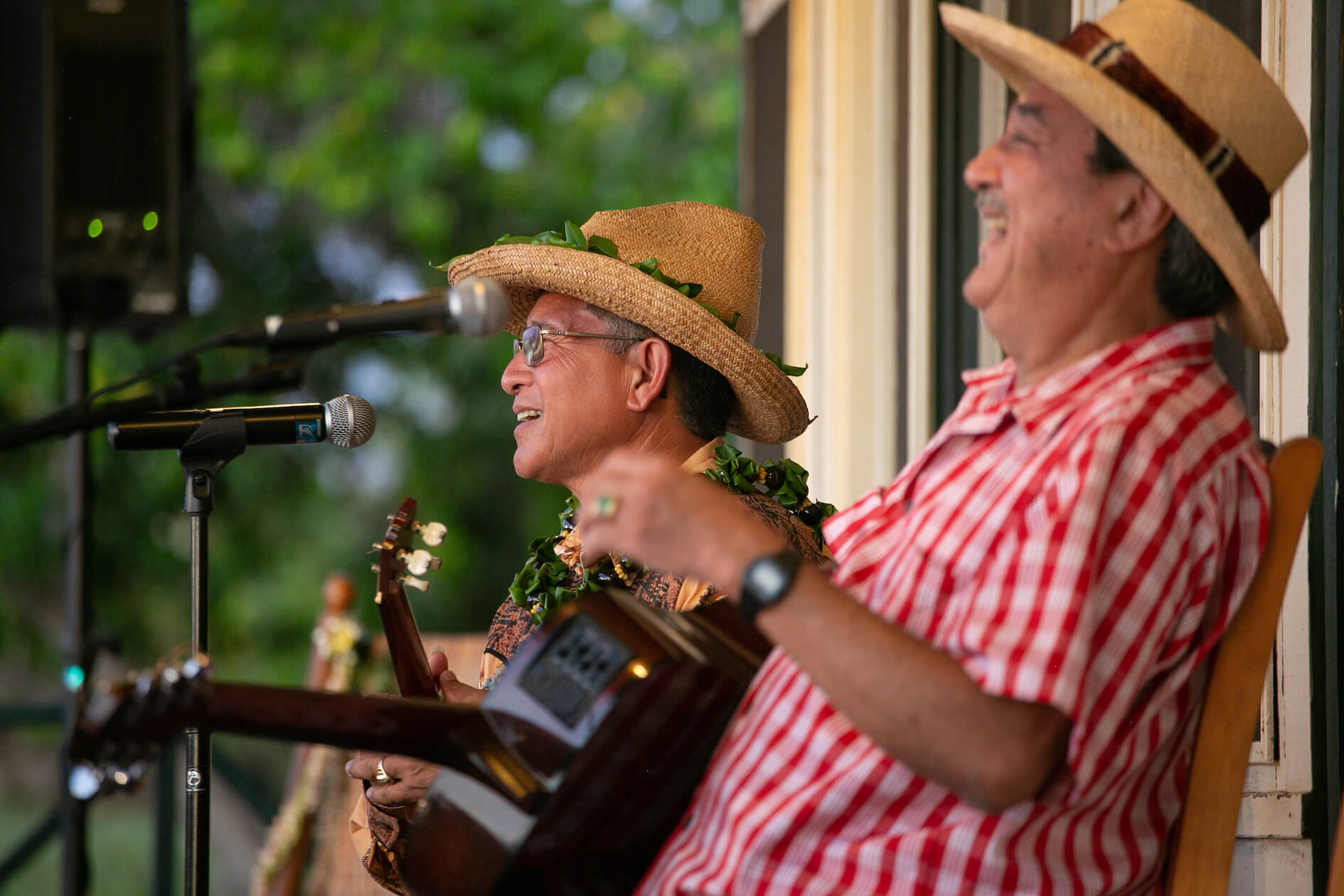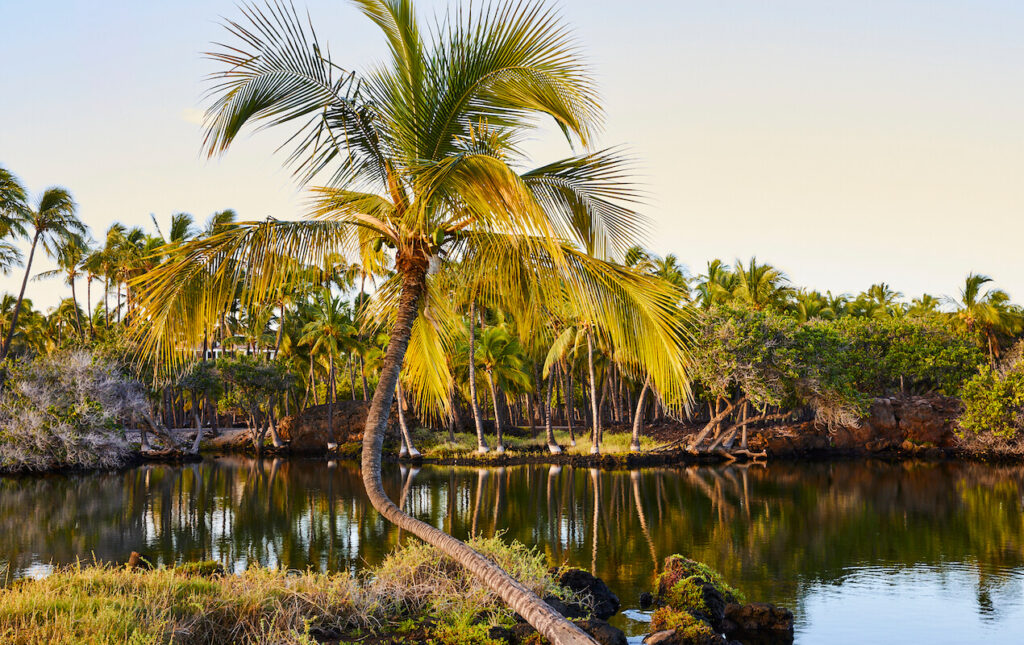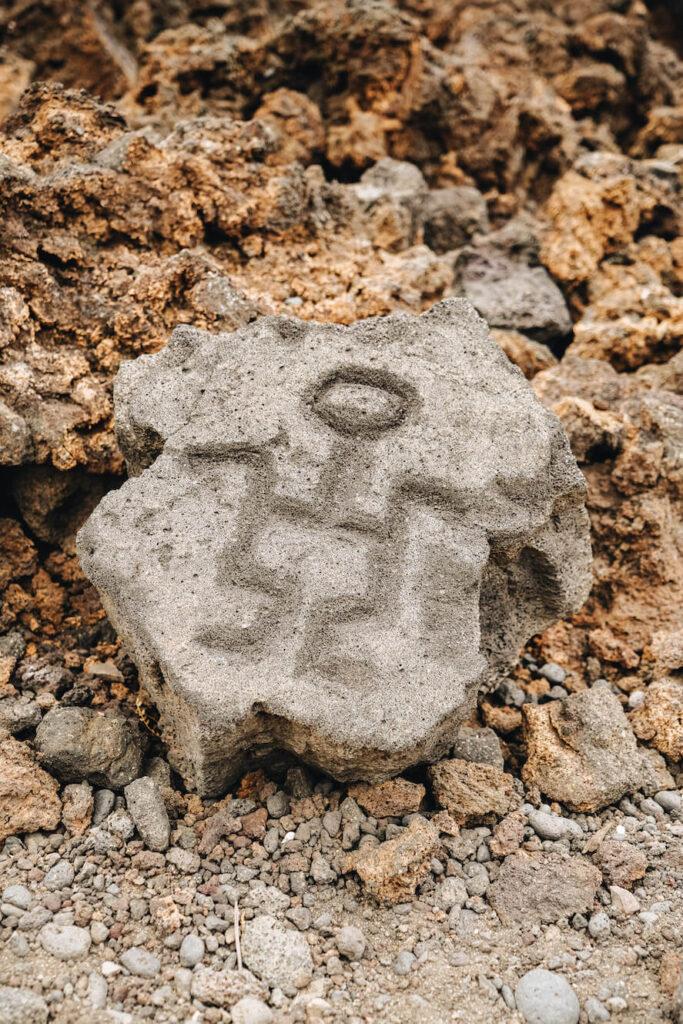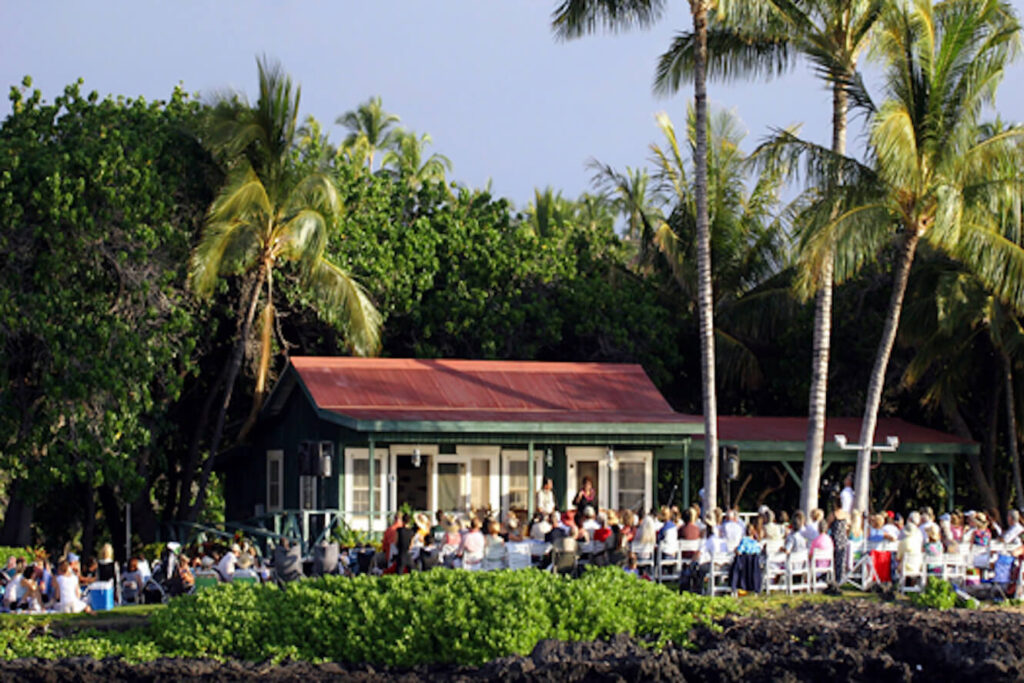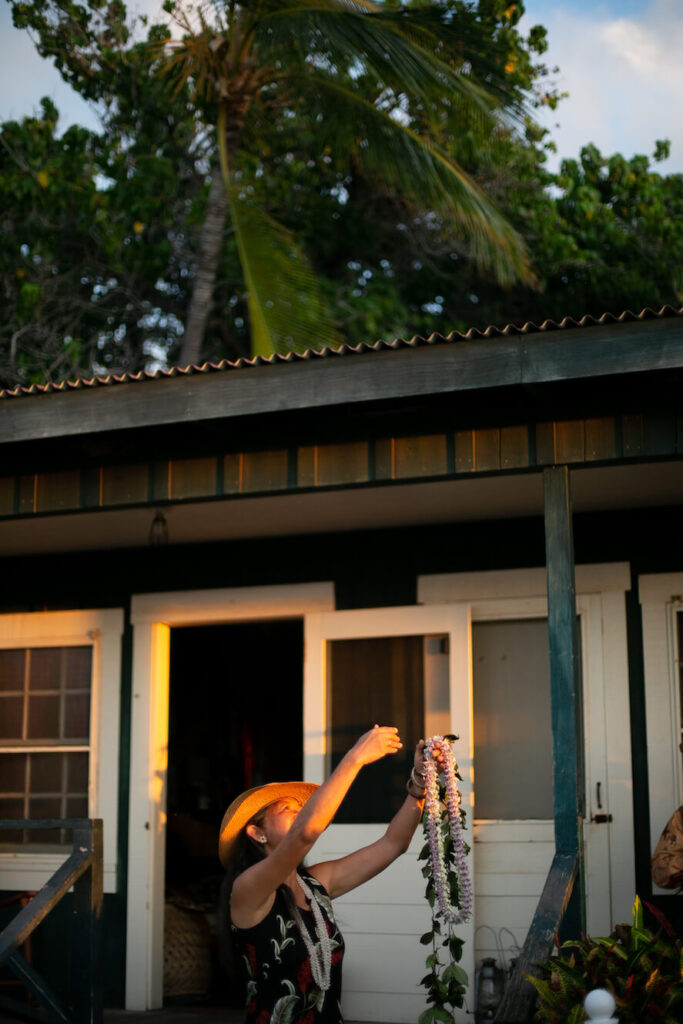“It all began at the Eva Parker Woods Cottage in the ‘70s,” Uncle Danny said. “And what a perfect venue. Not surrounded by modern buildings, but by ancient fishponds and the ocean. Maui across the channel, the sunset, the coconut trees swaying in the wind. What a great stage.”
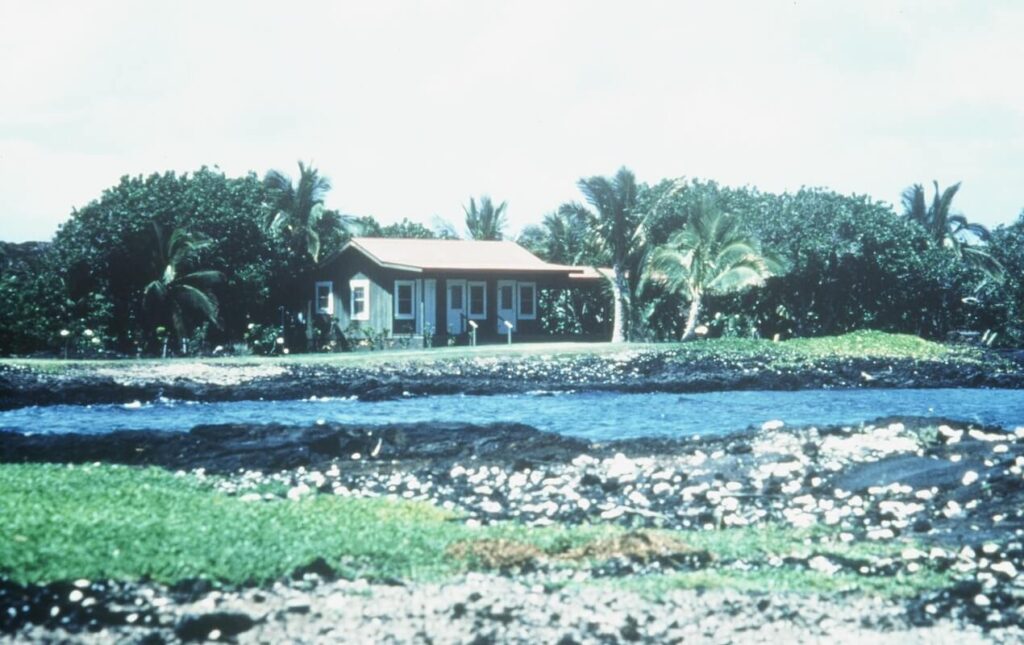
In the beginning
Daniel “Kaniela” Kahikina Akaka, Jr. – often referred to as “Uncle Danny” – first visited Kalāhuipua’a in 1972. A student of the Hawaiian Studies Program at the University of Hawai’i at Manoa, Uncle Danny and his classmates toured Hawai’i Island to interview elders, recording their stories.

A rugged landscape
His Hawaiian language professor, who stems from generations of paniolos (cowboys), finally led them to Kalāhuipua’a after several outings. At the time, much of the Kohala Coast had yet to be developed. Queen Ka’ahumanu Highway, the road that runs from Kailua-Kona to Kawaihae, existed only as a lava field, and dirt paths that ran from Mauka Highway to Puako guided Uncle Danny and his colleagues to their initial encounter with Kalāhuipua’a.
Born and raised in Honolulu, much of Uncle Danny’s youth was spent on the bustling beaches of Waikiki. At that time, he dreamt of pursuing the beach boy lifestyle pioneered by legends like Duke Kahanamoku. Tranquil in comparison to Hawaii’s largest city, Kalāhuipua’a struck Uncle Danny.

Tradition is born
During the evenings, Uncle Danny and his classmates gathered at the Eva Parker Woods Cottage. They’d talk story over cold beers, play music on the ‘ukulele and practice hula underneath the moonlight. Simplistic yet impactful, these moments on the lanai of the Eva Parker Woods Cottage shaped a beloved community event that carries a legacy of nearly three decades.
“That was really the inspiration for Twilight,” Uncle Danny said. “We wanted to share an experience we once had with our guests, an experience one cannot easily find. As Twilight grew, we brought our children because we wanted to share the magic of this place. And one day, perhaps they’d be storytellers, too.”
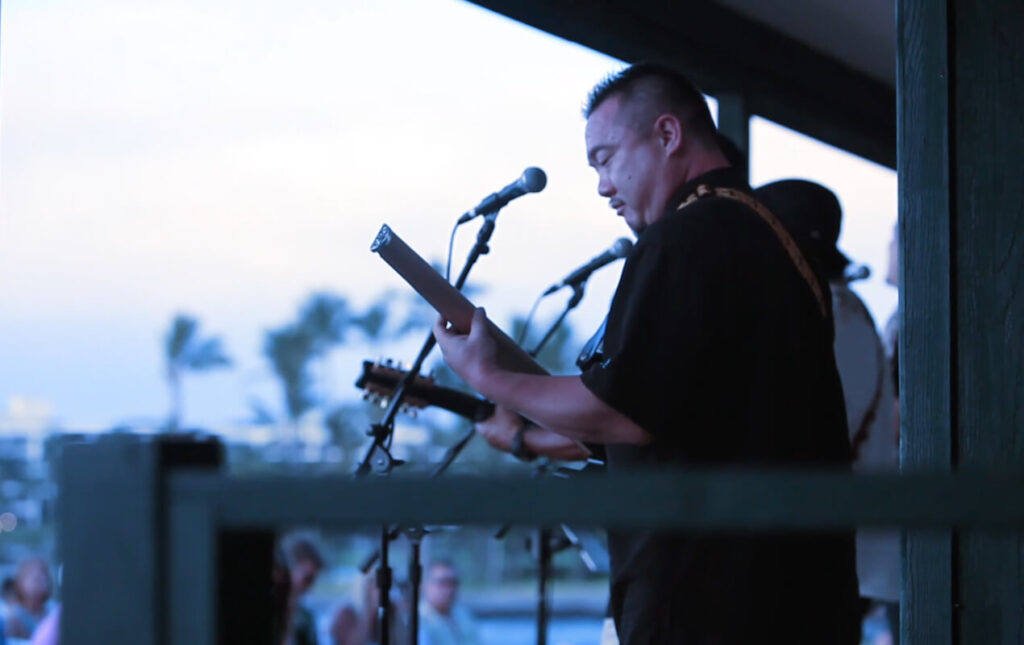
From our 'ohana to yours
Every month on the Saturday closest to the full moon, local voices converge to share stories passed down from one generation to another. From chicken skin stories at Halloween to renditions of Santo & Johnny’s “Sleepwalking” on the steel guitar, Twilight showcases the talents of musicians, dancers and storytellers. As Uncle Danny and his special guests tune their instruments and test their microphones, masses of visitors and neighbors gather around the cottage – usually with a Tommy Bahama chair or two in tow – in search of old Hawaii’s captivating charm.
And they find it when Uncle Danny tells his first story of the evening. Aside from the hush of the ocean’s tides, all falls quiet over Kalāhuipua’a when the familiar strums of the ‘ukulele flow into intimate jam sessions shared by Uncle Danny and his guests, who have included iconic musician Aunty Genoa Keawe, master slack key guitarist Cyril Pahinui and even legendary Hawaiian crooner Don Ho, who volunteered to share in stories along with a few impromptu songs one year.

An oasis, then and now
Much has changed since Uncle Danny’s first visit to Kalāhuipua’a in the 1970s. Dirt roads have been replaced with highways and remote shorelines with resorts and residential neighborhoods. But Kalāhuipua remains untouched, with Twilight as one of the mediums through which its spirit lives.
